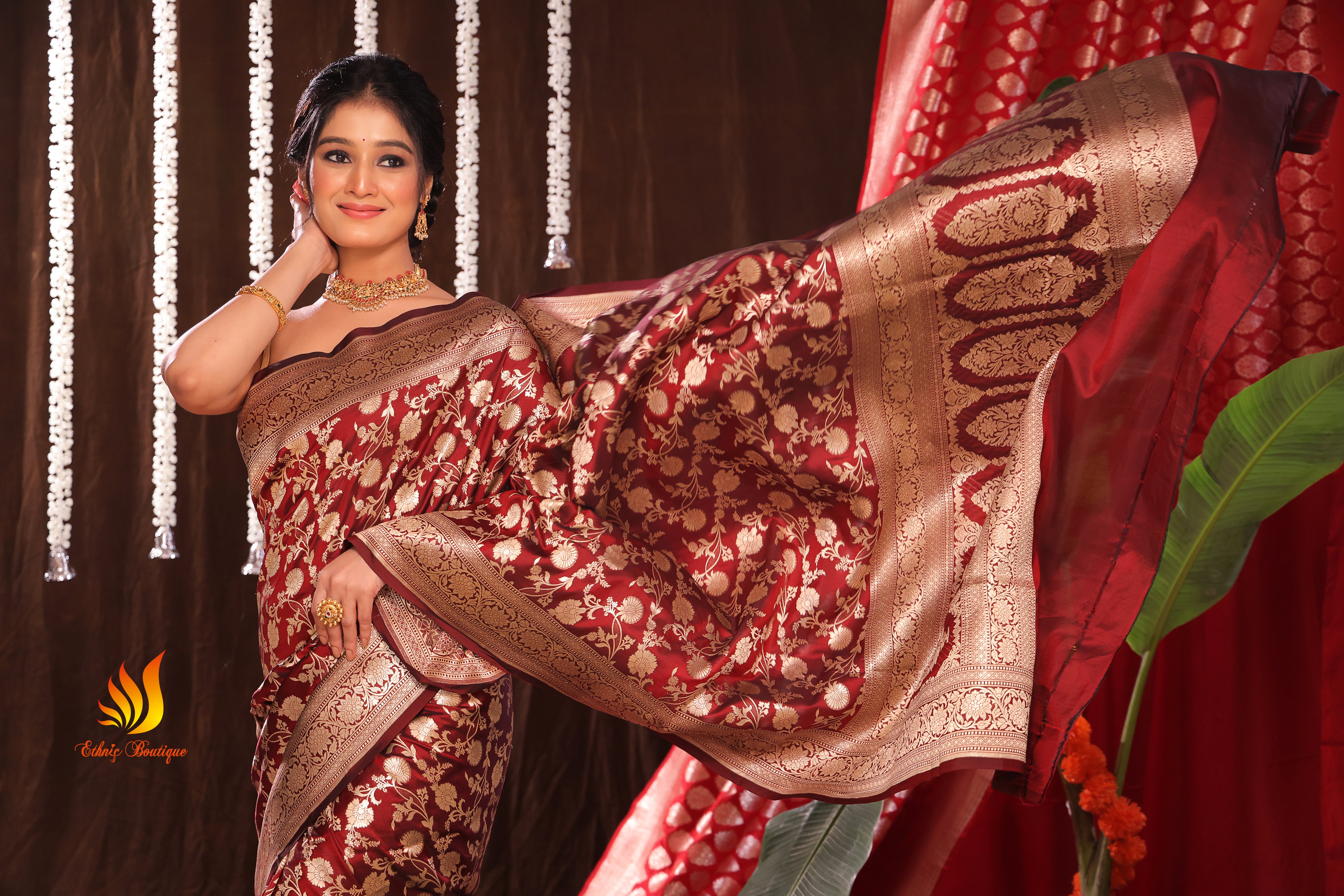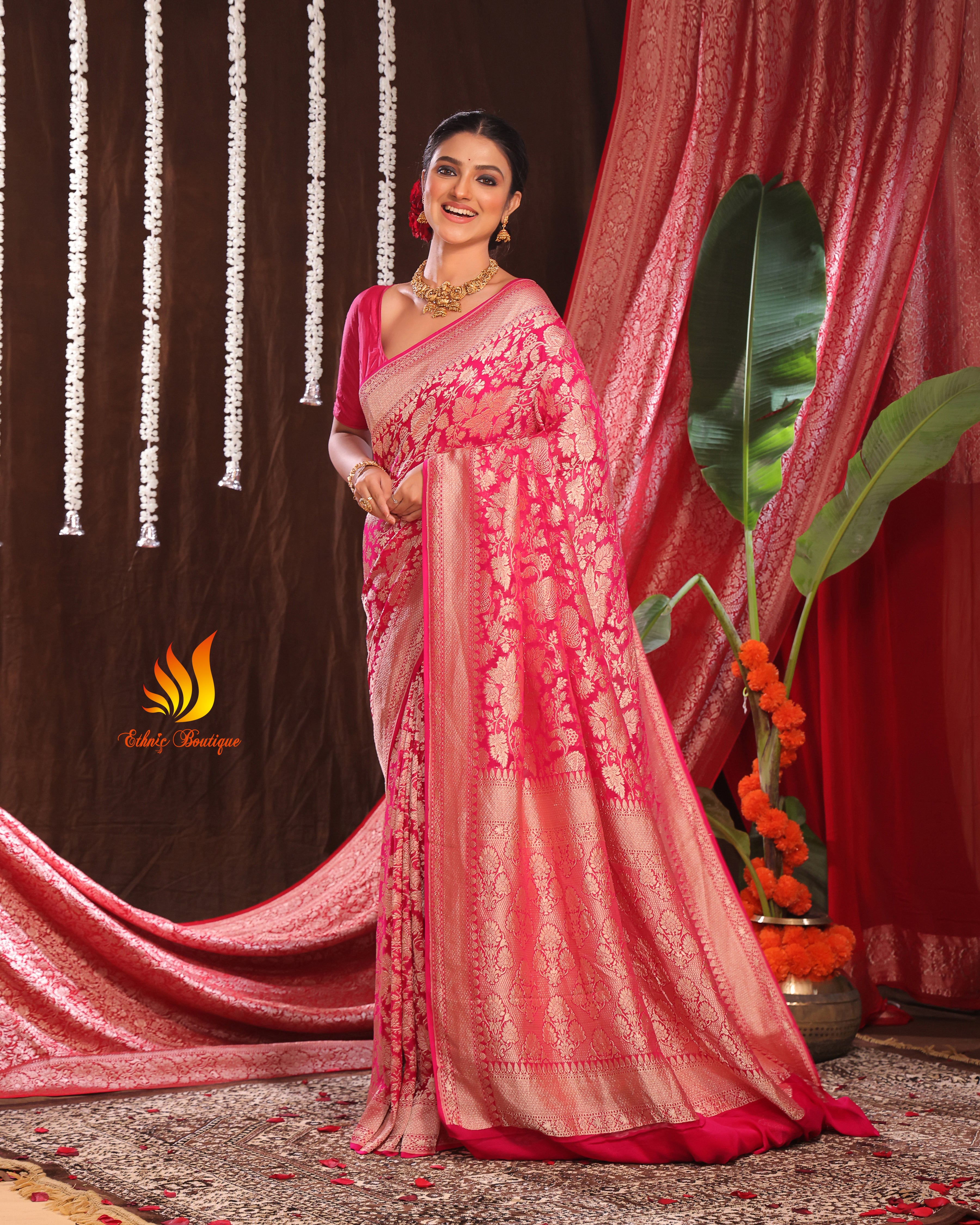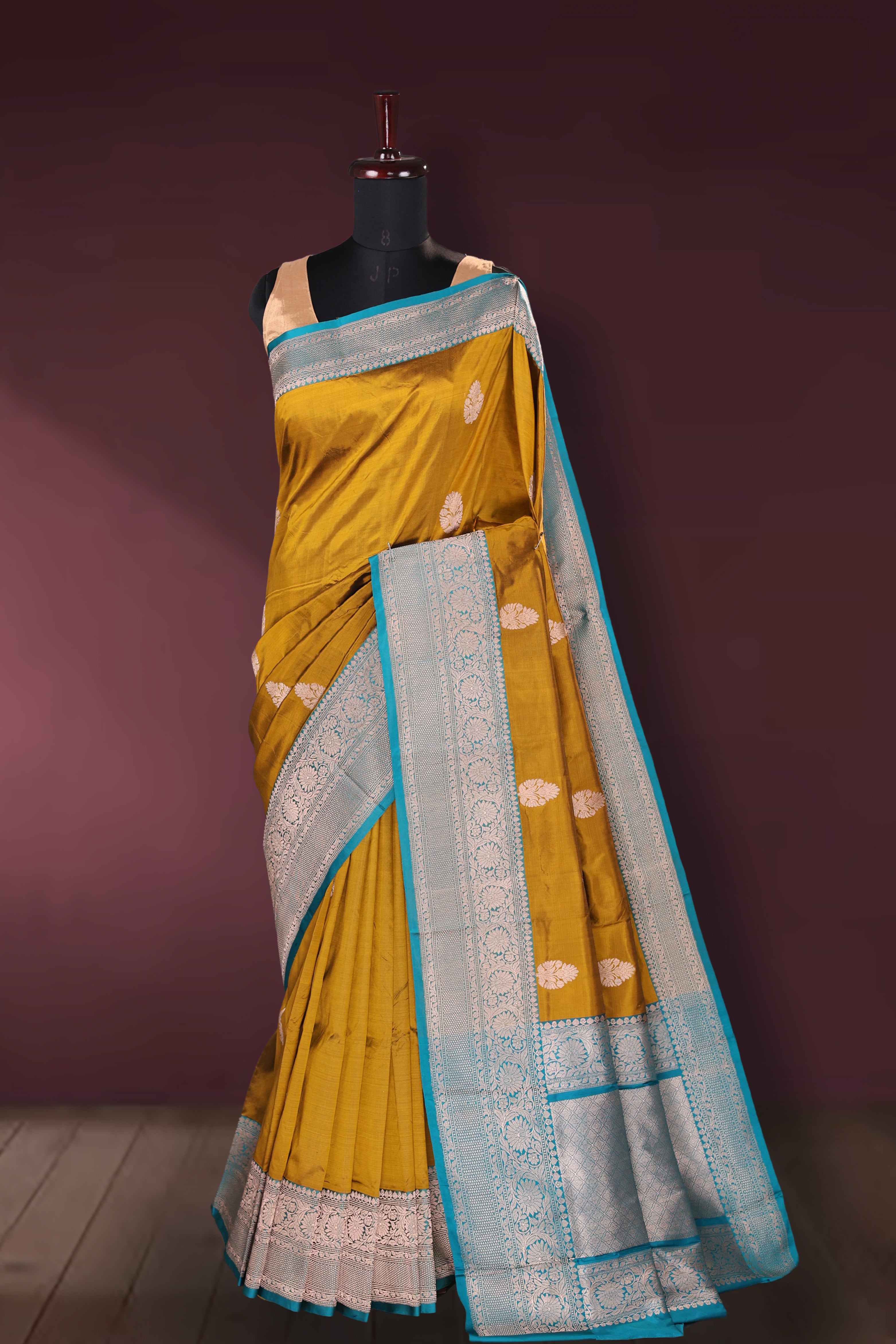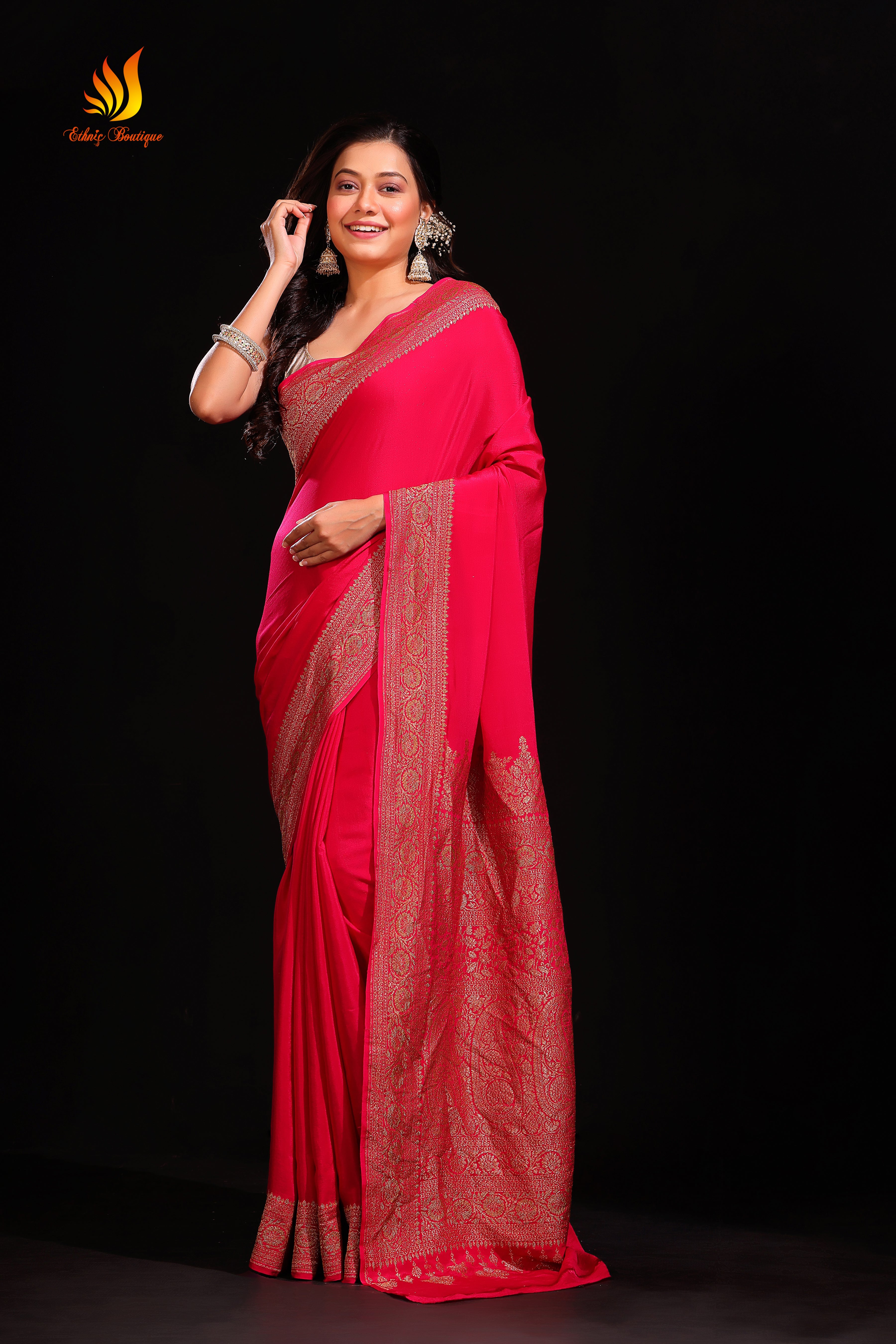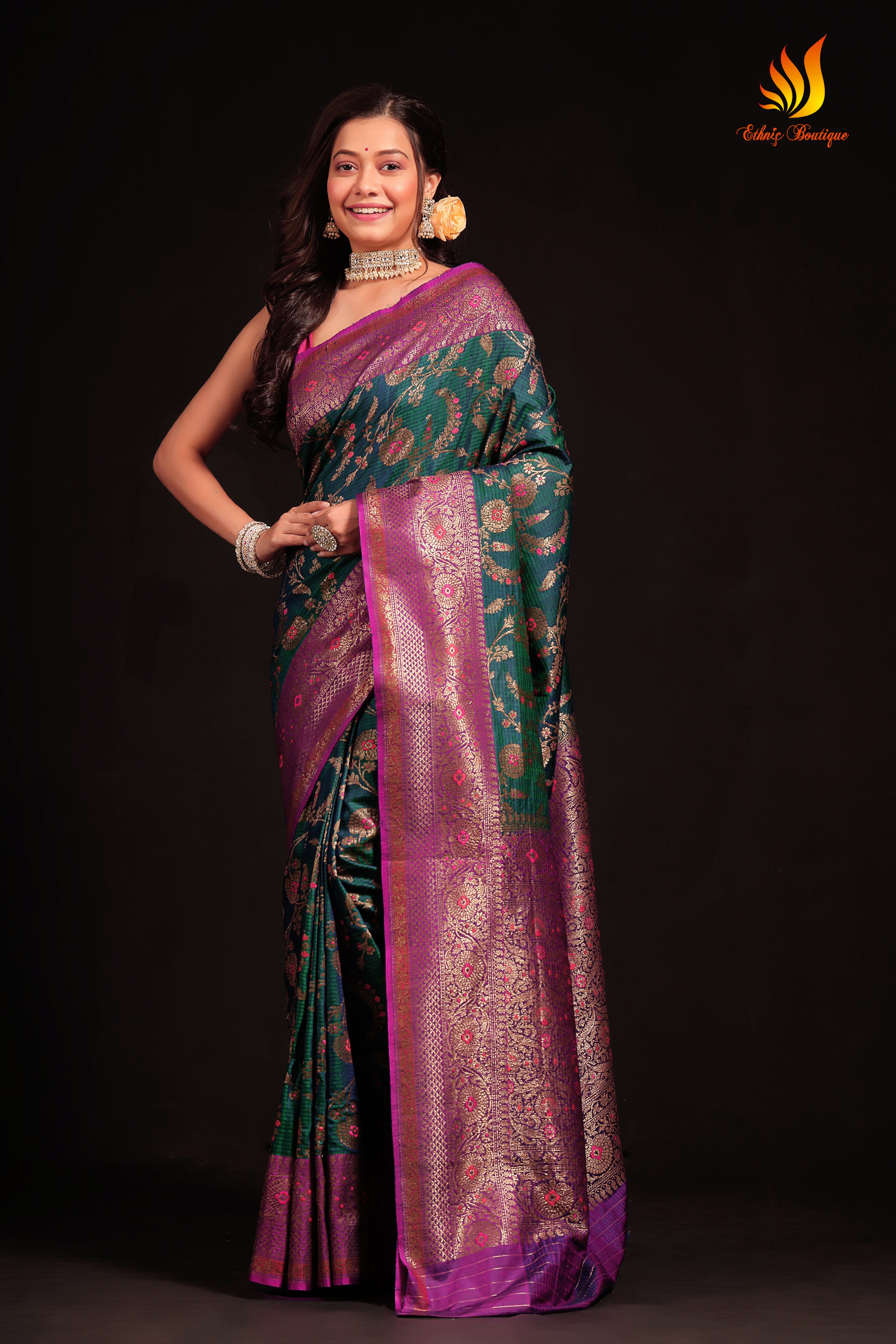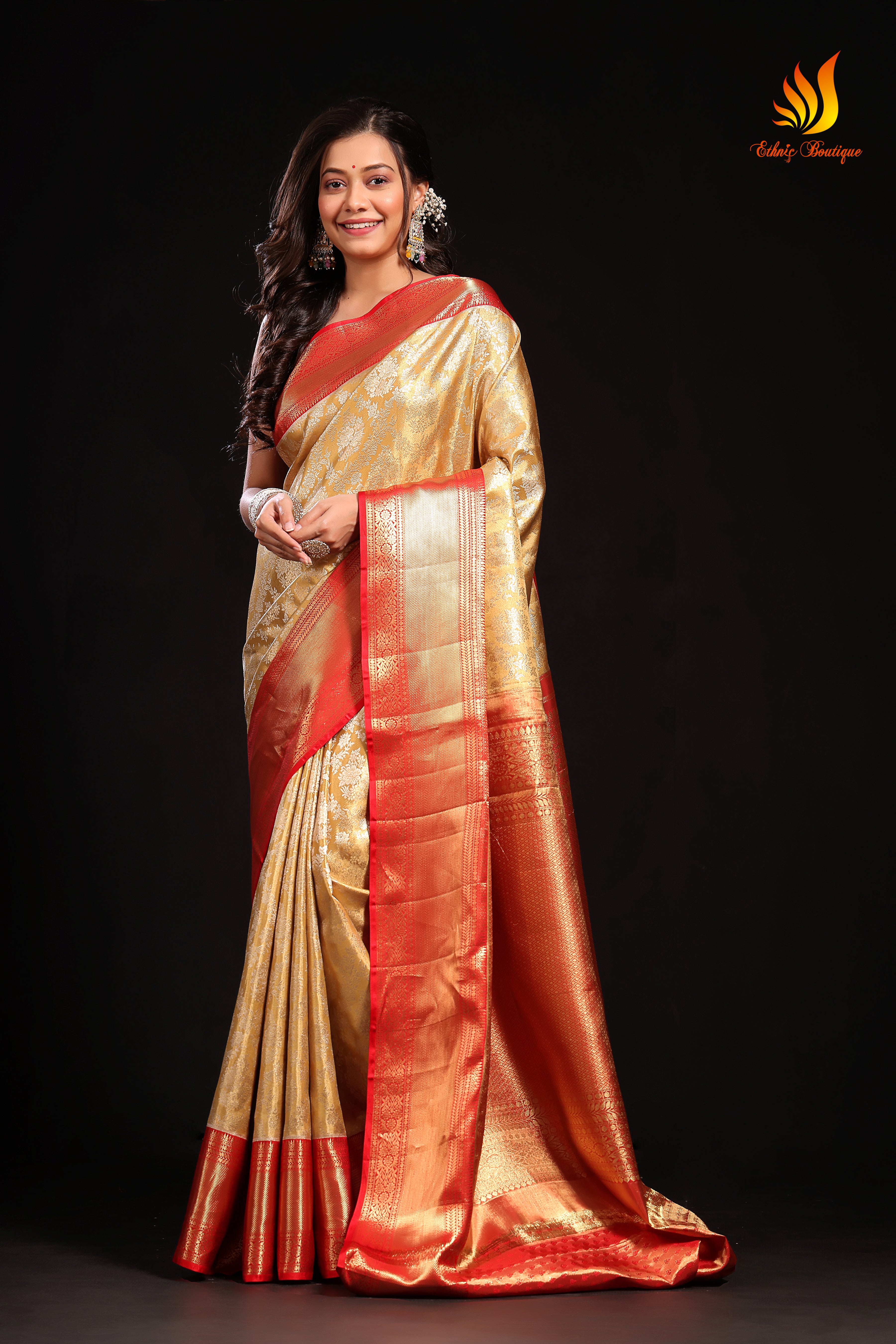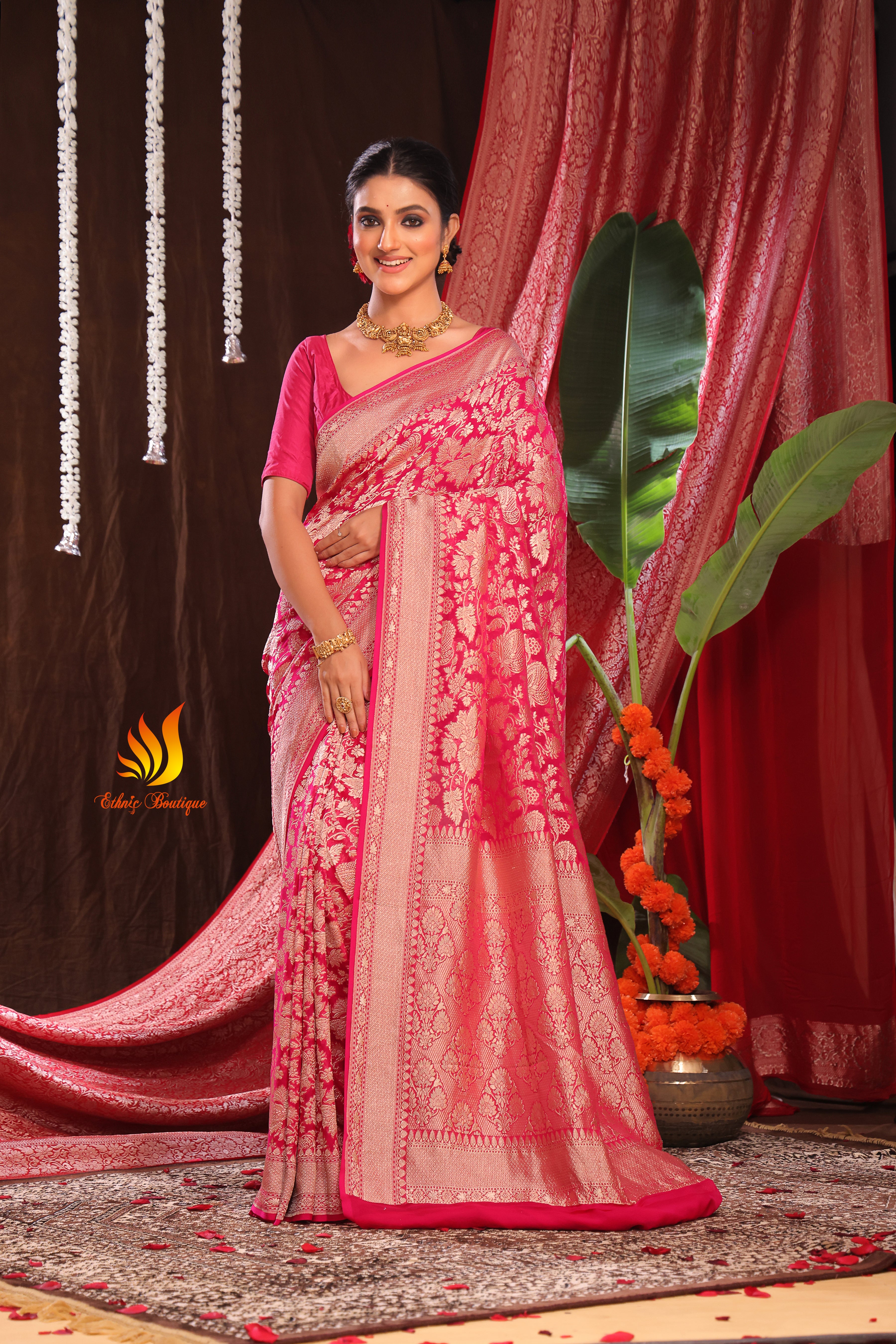"Semi tissue embroidery" refers to the application of various embroidery techniques on a "semi tissue" fabric. To understand this, let's break down both elements:
Semi Tissue Fabric
"Tissue fabric" is characterized by its lightweight, sheer, and often subtly crisp texture with a characteristic shimmer or metallic sheen. It's traditionally made from very fine silk threads, often combined with metallic zari (gold or silver) threads in the weft, giving it a translucent and lustrous quality.
"Semi tissue" fabric is a variation that blends these characteristics of traditional tissue with other materials, typically silk, cotton, or synthetic fibers. This blending aims to:
-
Retain the delicate and airy feel of tissue.
-
Add durability and structure, making it less prone to tearing or wrinkling than pure, ultra-fine tissue.
-
Improve color vibrancy and drape, as the added fibers can take dye better.
-
Offer a more affordable option than pure silk tissue.
Common examples of semi tissue fabrics include:
-
Semi Tissue Silk: A blend of silk with metallic or other fine threads.
-
Semi Tissue Cotton: Cotton blended with fine threads to give it a tissue-like sheen and lightness.
-
Semi Tissue Brocade: Tissue fabric woven with intricate patterns, often in silk and zari, giving it a rich, opulent look.
-
Semi Kanchi Tissue or Semi Banarasi Tissue: These refer to tissue-like fabrics produced in the Kanchipuram or Banaras weaving centers, often incorporating traditional motifs and zari work.
Embroidery on Semi Tissue Fabric
The slightly more robust nature of semi tissue fabric compared to pure tissue makes it a suitable canvas for various embroidery techniques. The translucent and shimmering base of semi tissue often enhances the beauty of the embroidery, allowing the underlying fabric's sheen to peek through and the embroidery to stand out.
Common types of embroidery found on semi tissue fabrics, especially on sarees, include:
-
Zari Work: This is perhaps the most common and traditional. Gold, silver, or copper metallic threads are used to create intricate patterns. The shimmer of zari perfectly complements the inherent sheen of tissue fabric, creating a rich and opulent look.
-
Resham Work (Thread Embroidery): Fine silk threads in various colors are used to create floral, paisley, geometric, or figurative motifs. The contrast between the soft silk threads and the subtle crispness of the semi tissue creates a beautiful texture.
-
Sequins and Beadwork: Small, reflective sequins and beads are sewn onto the fabric to add sparkle and dimension. This is particularly popular for festive wear and party wear, where the added bling catches the light.
-
Cutwork: A technique where parts of the fabric are cut away and the edges are finished with embroidery, creating an openwork or lace-like effect. This can be challenging on delicate tissue but possible on semi tissue with care.
-
Appliqué: Where pieces of fabric are cut into shapes and sewn onto the base fabric, often with embroidery around the edges. This can add contrasting textures and colors.
-
Gota Patti Work: Originating from Rajasthan, this involves attaching small pieces of zari ribbon or lace onto the fabric to create patterns. It adds a traditional and festive touch.
-
Machine Embroidery: Modern designs and intricate patterns can be created efficiently using machine embroidery, offering precision and consistency.
Aesthetics and Usage
Semi tissue embroidery, particularly on sarees, is highly valued for its:
-
Graceful Drape: It combines the lightness of tissue with a slightly better fall.
-
Subtle Luster: The metallic sheen is elegant and sophisticated, not overly flashy.
-
Intricate Designs: The fabric provides a good base for both delicate and more elaborate embroidery.
-
Versatility: Depending on the density and type of embroidery, semi tissue sarees can be suitable for a range of occasions, from formal events and weddings to festive celebrations and semi-formal gatherings.
When choosing a semi tissue embroidered piece, consider the quality of the base fabric, the intricacy and neatness of the embroidery, and the overall color combination to ensure a truly elegant and well-crafted garment.
